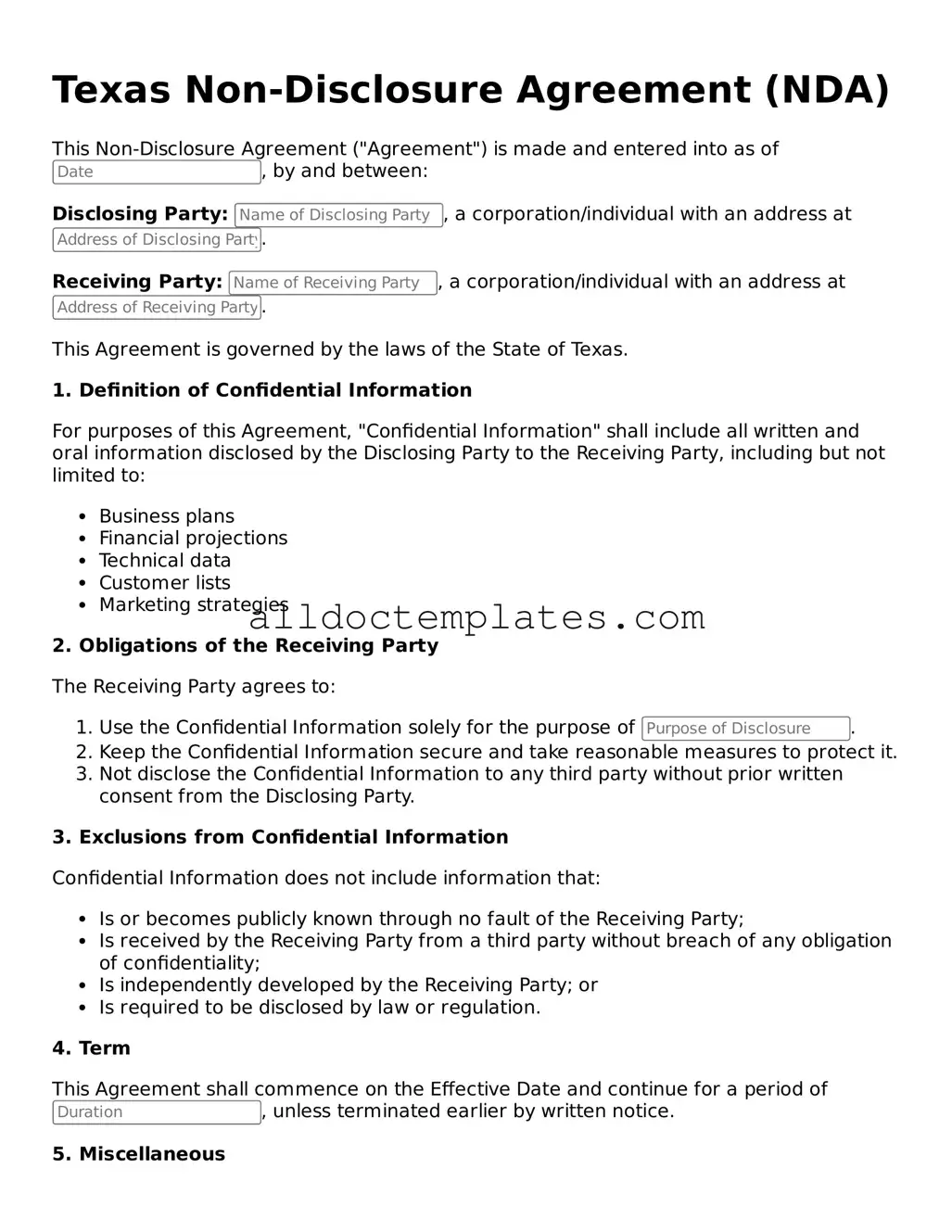Free Non-disclosure Agreement Document for Texas State
A Texas Non-disclosure Agreement (NDA) is a legal contract designed to protect sensitive information shared between parties. This form ensures that confidential details remain private and are not disclosed to unauthorized individuals. By signing an NDA, parties commit to maintaining the confidentiality of the information exchanged, fostering trust and collaboration.
Get Your Form Now
